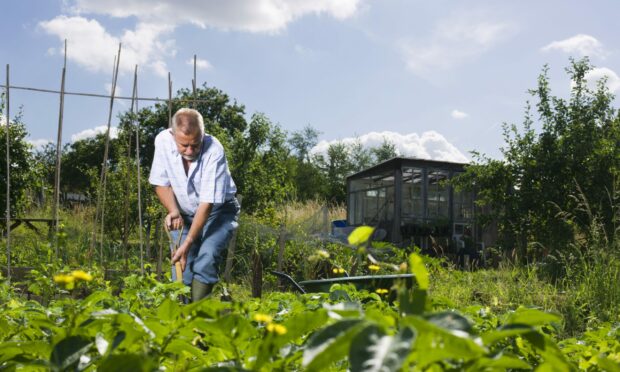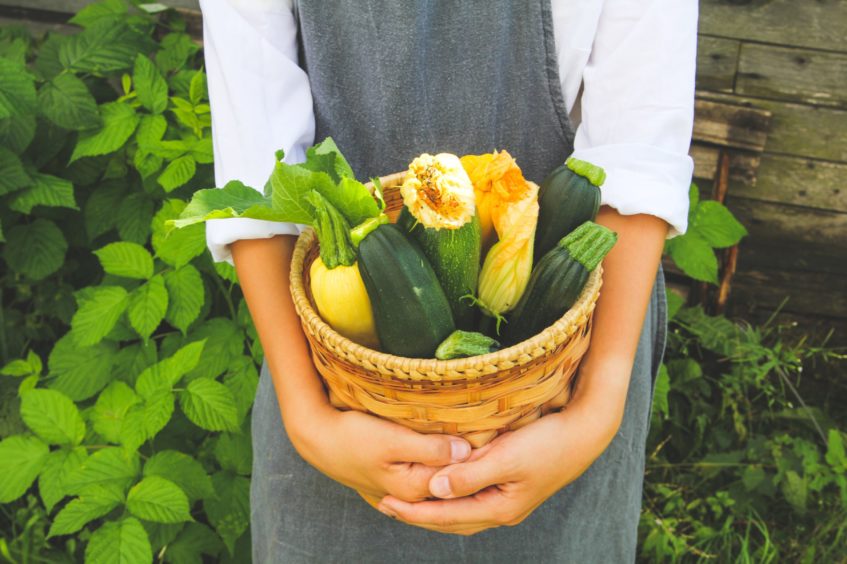The SNP’s agenda for their annual conference to be held online at the end of next week contains many of the expected and predictable motions for debate. The need for independence, a call for a referendum, pensions, the removal of nuclear weapons will all be debated, as they should.
However, one less contentious item caught my eye. Conference will debate the need for more allotments across Scotland.
I couldn’t agree more. I’ve written before about my conversion to and love for our wee allotment. For a minimal annual fee it has seen us through the darkest days of the Covid lockdown, with its benefits of helping physical fitness and mental wellbeing, while at the same time providing us – along with friends and neighbours – with a steady supply of fresh fruit and vegetables.
We’ve had our allotment for three years now, but that was after languishing on a waiting list for seven years, a wait which has now stretched to over 10 years due to increased demand.
Long wait for allotment echoed throughout Scotland
The motion at the SNP conference claims that current planning policy undervalues their importance, pointing out that many local authority planning policies do not even mention allotments. It adds that the Scottish Government should step in with investment to provide starter kits, and that funding should be available to ensure the maintenance of both existing and new allotments.
It adds that public, brownfield and derelict land should be brought into use and that in any major development proposals, land for allotments should be provided.
But none of them have any vacant plots.
Our long wait for an allotment is echoed throughout Scotland. Aberdeenshire Council has allotments for rent in Ellon, Gourdon, Huntly, Inverurie and Kemnay. But none of them have any vacant plots, and for all of them there are waiting lists.
It’s the same story in Aberdeen itself. The council states that allotments are increasingly popular.
“More often than not there will be a waiting list for an allotment plot at all our allotment sites,” their website states.
In fact, last year, between Aberdeen and Aberdeenshire councils there were over 300 people on their waiting lists. Other councils, such as Highland and Moray do not provide allotments themselves, instead encouraging local allotment associations to provide them.
Wider benefits of growing your own
There’s little doubt of the personal benefits running an allotment brings, something to which I can personally testify. But there are wider benefits, and with Cop 26 coming to Scotland in just a few weeks and the worldwide attention this will bring, it’s worth pointing these out.
Think of the carbon footprint created by aeroplane loads of fruit and veg from Africa and Central America, or even lorryloads of vegetables being driven from the south of England to Scotland. Better surely to grow local, not just for saving food miles but for food security too. Empty supermarket shelves are already evidence of this need.
According to the Scottish Allotments and Gardens Society, which acts in a tripartite forum along with the Scottish Government and local authorities to promote their use and development, the waiting list issue is an ever-growing one.
They want to see the rules for establishing allotments, many of which date from the 1950s, overhauled, pointing out that the problems of physical and mental health, food poverty and isolation are challenges that need to be met head on. They are particularly keen to see the conversion of urban wasteland into productive green space.
From public parks to brownfield sites
Scotland’s first allotments were established in the dark days of the First World War, to counter food shortages created by German U-boats and a naval blockade. At the end of that conflict, such was their popularity, most of them simply carried on.
Some, set up in public parks during the conflict were replaced by others on brownfield sites. The Great Depression saw an increase in their popularity through basic necessity. Today though, most of the 10,000 or so allotmenteers across Scotland are more motivated by healthy eating and concern for the environment than poverty.
Possibly encouraged by the fact that the city is shortly to host Cop 26, Glasgow City Council has announced an investment of over £400,000 to create 250 new allotment sites across the city. Perhaps that’s a move which could be replicated across Scotland to feed the demand which we know exists.
Fewer plane and lorryloads of produce travelling to Scotland will give us the added bonus of going a tiny step along the way to saving the planet.
Meanwhile, I’ll be using my delegate vote at next week’s SNP conference to back the motion calling on the Scottish Government to create more allotments. Whether that’s through legislation or investment is a matter for further debate, but it certainly needs to be done as more and more of us join the drive for healthy, locally grown food.
And, of course, fewer plane and lorryloads of produce travelling to Scotland will give us the added bonus of going a tiny step along the way to saving the planet.
Campbell Gunn is a retired political editor who served as special adviser to two First Ministers of Scotland


